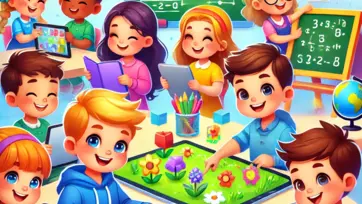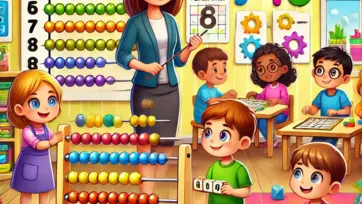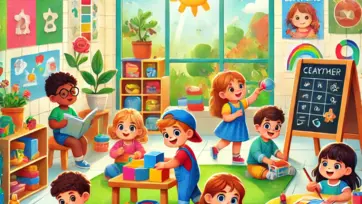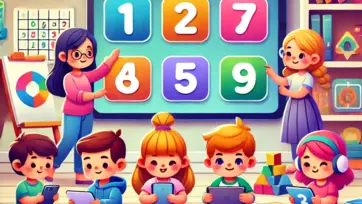Critical thinking is an essential skill that helps children analyze information, solve problems, and make sound decisions. By nurturing critical thinking from an early age, parents and educators can equip kids with the ability to approach challenges with curiosity and confidence. Here are practical ways to develop critical thinking skills in young children.
1. Encourage Curiosity and Asking Questions
Children are naturally curious, and encouraging them to ask questions fosters independent thinking.
Ways to Encourage Questions:
- Ask open-ended questions like, “What do you think will happen next?”
- Create a “Why” or “How” discussion time to explore different topics.
- Encourage kids to research answers instead of providing immediate solutions.
2. Teach Problem-Solving Skills
Helping children develop problem-solving skills allows them to approach challenges creatively and confidently.
Activities for Problem-Solving:
- Give real-life scenarios and ask how they would solve them.
- Play logic-based games like Sudoku, chess, or riddles.
- Allow them to face challenges independently before stepping in.
3. Promote Decision-Making Opportunities
Allowing kids to make decisions, big or small, strengthens their ability to analyze situations and consider consequences.
Ways to Foster Decision-Making:
- Let kids choose between two or more activities.
- Ask them to explain their choices and reasoning.
- Give them responsibility over simple daily tasks.
4. Engage in Thought-Provoking Discussions
Encouraging kids to discuss their thoughts and opinions boosts their ability to evaluate different perspectives.
Discussion Ideas:
- Talk about moral dilemmas or ethical questions.
- Debate simple topics like “Which is better: cats or dogs?”
- Discuss stories and encourage kids to predict alternative endings.
5. Use Hands-On Learning Experiences
Experiential learning helps children grasp concepts more effectively by engaging in real-world problem-solving.
Hands-On Activities:
- Conduct science experiments to develop hypothesis-testing skills.
- Encourage DIY projects that require planning and execution.
- Visit museums, parks, and other places that inspire inquiry.
6. Introduce Logical and Strategic Games
Games that require planning and thinking ahead enhance cognitive development and critical analysis.
Recommended Games:
- Chess and checkers for strategic thinking.
- Jigsaw puzzles for pattern recognition.
- Board games like Clue, Scrabble, and Battleship for reasoning skills.
7. Encourage Creativity and Innovation
Creativity and critical thinking go hand in hand. Encouraging children to think creatively expands their problem-solving abilities.
Creative Thinking Exercises:
- Ask “What if?” questions to spark imagination.
- Encourage storytelling with open-ended prompts.
- Let them build and invent using LEGO, blocks, or recycled materials.
8. Model Critical Thinking Behavior
Children learn best by observing adults. Demonstrate critical thinking in daily situations.
How to Model Critical Thinking:
- Explain your thought process when making decisions.
- Show problem-solving in action, like budgeting or planning an event.
- Encourage self-reflection by asking, “What could we do differently next time?”
9. Read Books That Promote Critical Thinking
Books that pose questions, challenges, or moral dilemmas help children analyze situations from different perspectives.
Book Recommendations:
- "The Adventures of Sherlock Holmes" (mystery and deduction skills)
- "The Giving Tree" (moral reasoning and empathy)
- "Horton Hears a Who!" (understanding perspectives and compassion)
10. Teach Kids to Identify Facts vs. Opinions
Helping children differentiate between facts and opinions is a crucial critical thinking skill.
Ways to Teach Fact vs. Opinion:
- Play a game where they label statements as fact or opinion.
- Discuss news articles and identify factual information.
- Teach kids to question the reliability of sources.
11. Foster Emotional Intelligence
Understanding emotions and different viewpoints improves decision-making and problem-solving abilities.
Activities for Emotional Intelligence:
- Role-play different scenarios to explore feelings.
- Discuss how different emotions affect choices.
- Encourage empathy by asking, “How would you feel if this happened to you?”
12. Encourage Reflection and Self-Evaluation
Self-evaluation helps kids analyze their own decisions and learning experiences.
Ways to Foster Reflection:
- Ask kids to talk about their successes and challenges.
- Encourage journaling about daily experiences.
- Discuss lessons learned from mistakes.
Conclusion
Developing critical thinking skills in kids from an early age sets them up for lifelong success. By fostering curiosity, problem-solving, creativity, and decision-making, parents and educators can help children think independently and tackle challenges with confidence. Encouraging discussions, games, and real-world learning experiences ensures that kids grow into thoughtful and capable individuals.








